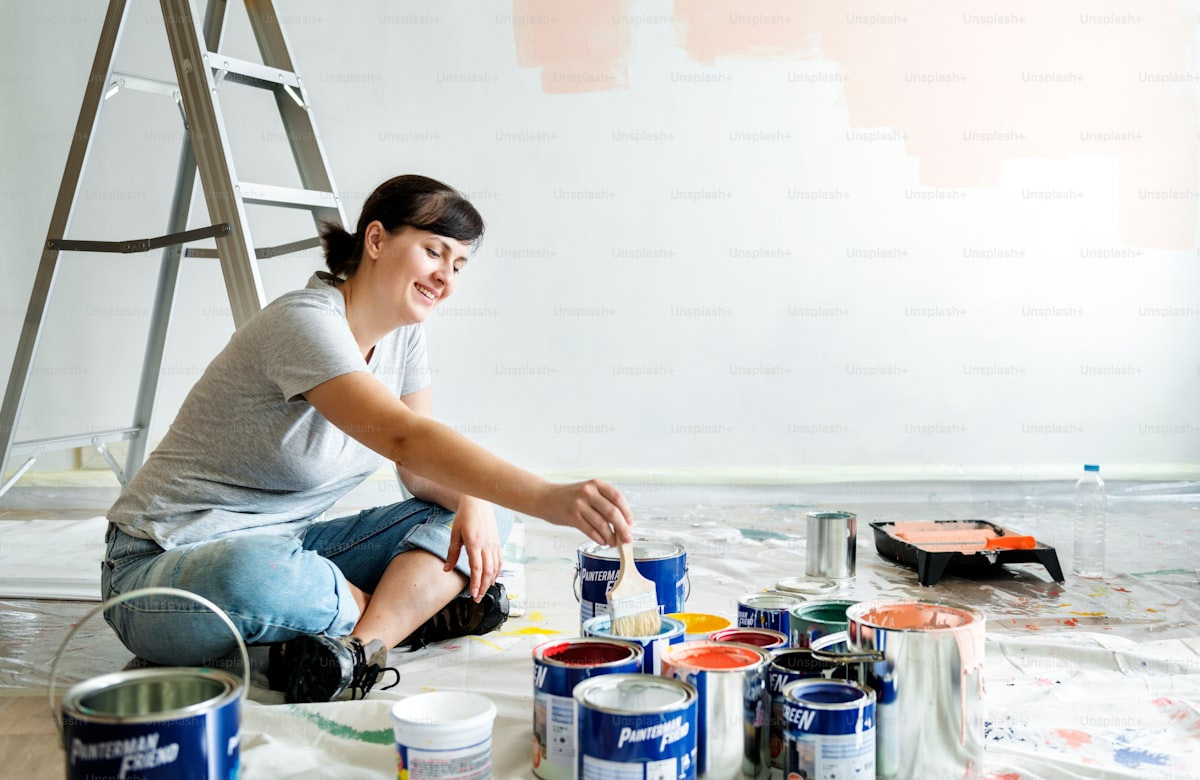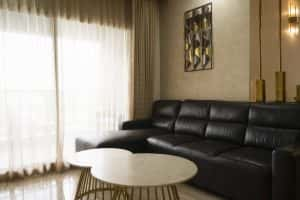After finding the clients, designing your rental space might be the most challenging aspect of the rental property industry.
When you’re doing up a property for rental purposes, it’s important to consider what materials you’ll use. Rental properties inevitably suffer wear and tear and, in reality, people tend to pay less attention to not damaging property when it isn’t theirs.
So what can you do? It comes down to choosing good quality materials which are both durable and aesthetically pleasing. There are lots of different options available, so in this post we’re exploring the best materials for rental properties and providing some ideas on how to use them.
The Importance of Durable Interior Design Materials

Before we get into the materials themselves, let’s quickly cover some of the reasons why they are important, and how they help landlords with rental property management.
Wear and Tear in Rental Properties
Rental properties often experience higher foot traffic compared to owner-occupied homes. Durable materials, such as resilient flooring like vinyl paint or ceramic tile, can withstand this wear and tear far better than less robust options.
Durable building materials like stain-resistant fabrics and scratch-resistant finishes are essential in rental properties. They can prevent common mishaps from becoming permanent eyesores, reducing rental property maintenance costs.
Economic Benefits of Durable Materials
Rental properties featuring high-quality, durable materials tend to have a higher perceived value. This can allow property owners to charge higher rent and attract tenants willing to pay more for quality.
Sustainability and Longevity
Using durable materials can reduce waste in the form of discarded furniture, fixtures, and finishes. This aligns with good rental property management practice, sustainable design principles, and promoting a circular economy.
Materials that Blend Durability and Style

Now that we talked about why durable materials are important, let’s give our top picks.
- Hardwood Flooring
Hardwood rental property flooring is renowned for its durability and timeless elegance. It can withstand heavy foot traffic and is a long-term investment in your home. Additionally, hardwood floors are incredibly versatile, complementing a range of interior design styles, from traditional to contemporary.
Hardwood floors can be customized with various finishes, such as matte, semi-gloss, or high-gloss. These finishes protect the wood and enhance its appearance, providing options to match your interior decor.
- Porcelain and Ceramic Tiles
Porcelain and ceramic tiles are exceptionally durable and resistant to moisture at a low cost, making them ideal for areas prone to spills and high humidity, such as kitchens and bathrooms. Their resilience ensures they can withstand wear and tear.
These tiles come in various designs, including realistic wood and stone textures, intricate patterns, and vibrant colors. This versatility allows you to achieve multiple aesthetic looks while benefiting from their durability.
- Laminate Countertops
Laminate countertops are a great option that offers durability and resistance to stains and impact. They can mimic the appearance of natural stone or wood, providing a stylish look without the high price tag.
Unlike laminate flooring, countertops are relatively easy to install, saving time and money compared to more complex countertop materials. They can be a great choice for DIY enthusiasts.
- Stainless Steel Appliances
Stainless steel appliances are prized for their durability and rust, stains, and corrosion resistance. They have a sleek and contemporary appearance that complements various kitchen styles.
To maintain the shine of stainless steel appliances, clean them regularly with a soft cloth and a mild cleaning solution. Avoid abrasive cleaners or scouring pads that could scratch the surface.
- Synthetic Fabrics for Upholstery
Synthetic upholstery fabrics, such as polyester and microfiber, are known for their resistance to stains and wear. They are an excellent choice for furniture pieces in high-traffic areas.
They are easy to clean, often requiring just a simple spot cleaning with mild detergent and water. This makes them a practical choice for households with pets or young children.
Colors and Finishes that Enhance Durability and Style

Choosing a color that complements your durable design choices is very important. Let’s see why color and finishes play a big role.
Neutral Color Palettes
Neutral colors like whites, grays, beiges, and soft browns provide a timeless backdrop for any interior. They don’t go out of style and can quickly adapt to changing design trends. The versatility of neutral colors allows you to change accessories and decor without needing a major overhaul, saving time and money.
While neutrals dominate the overall color scheme, they can be paired with accent colors for a pop of vibrancy. For instance, throw pillows, artwork, or decorative pieces in bold colors can be strategically placed to add visual interest. This balance between neutrals and accents ensures that your space remains fresh and stylish while preserving the durability of the foundational neutral palette.
Matte and Satin Finishes
Matte and satin finishes are excellent for surfaces like walls, rental property flooring, and furniture. Unlike high-gloss finishes, they tend to conceal minor scratches, scuffs, and fingerprints, making them ideal for high-traffic areas.
Matte and satin finishes can be more forgiving in homes with children or pets, as they don’t highlight imperfections as readily as glossy surfaces.
Matte finishes, in particular, have gained popularity in modern interior design. They provide a contemporary, understated look that complements minimalist and industrial design styles. On the other hand, Satin finishes strike a balance between matte and glossy, offering a subtle sheen that adds elegance without being overly reflective.
Conclusion
Choosing interior design materials for rental properties is a crucial decision that can significantly impact aesthetics and durability.
By selecting durable materials such as hardwood, porcelain and ceramic tiles, laminate countertops, stainless steel appliances, and synthetic upholstery fabrics, landlords can ensure their rental spaces withstand the rigors of tenant use while maintaining a stylish appearance.
Related




